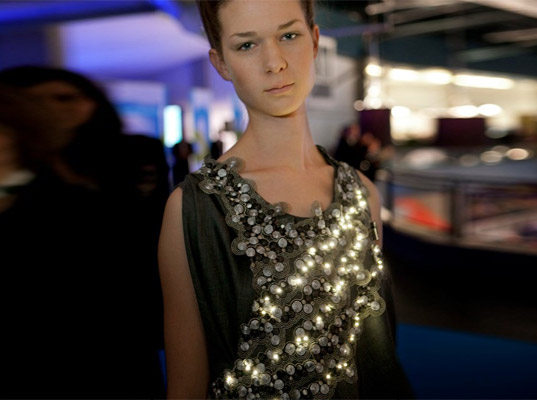From a melancholic loss to a tangible idea the C60 Redux was made.
In the book I Miss My Pencil, co-authors Martin Bone and Kara Johnson of design firm IDEO conceived twelve design experiments through collaboration, sketching, and prototyping. One of these concept designs is called the C60 Redux and it begs the question, “Does the mix tape still exist in a digital world?” Bone shares his thoughts: “I feel strangely melancholic that in this shift from analog to digital we somehow lost something; we traded connection for convenience.” And he gloomily concludes: “Ultimately this experiment won’t change anything; technology marches on, teenagers in love today play out their courtship online in their Facebook pages, not browsing record stacks. But I feel much better for having done it.”
This particular experiment inspired a group at IDEO to make a real working model of the C60 Redux and their efforts are revealed in the video above. Something was “somehow lost” in the technological shift from analog to digital, thought Bone. That something is physicality, and so the designers marched on to create a working model with this question in mind: “What if we could touch our music again?” Using Arduino Pro Mini boards and RFID tags the concept came to life. The designers constructed a small box that takes design cues from a record player, and built inside are Arduino boards that can read RFID (or radio-frequency identification) cards. Embedded inside custom-made cards are two RFID tags, each tag representing a song. When you place a card on top of the box, the circuitry inside the box instantly reads the RFID tag and plays the song stored on it. Flip a card over to play Side B. Place multiple cards on the surface to create a playlist (the cards are read in a clockwise order).
And just like that a mere concept born out of a need to bring back the physicality of music was made into a real product. Beyond the final product, what’s important to glean from this story is the tale of technology and how it can bring exciting advances and at the same time disregard staples of the past. In the move from vinyl to cassette tapes to CDs to MP3s, the convenience of throwing a couple hundred songs on an iPod has managed to make most forget about the materiality of music and what that brought with it. The days of collecting piles of vinyl and what Bone calls the “joy and love” of creating personal mix tapes are way behind us, but something like the C60 Redux might just have the power to bring it all back to our digital world.
[Via Engadget; IMissMyPencil]















